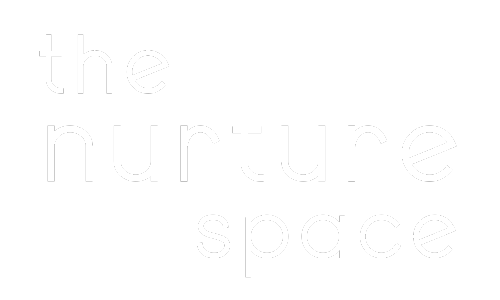Polyvagal Theory in Practice for Individuals
Polyvagal theory explains how trauma affects the nervous system and how to heal. Here, I'll cover the theory basics, how the body responds to stress and the vagus nerve. We'll also cover practical steps based on polyvagal theory to get better and live the life you want!
How Trauma Affects the Nervous System
Your nervous system is like a dimmer switch for your body's stress responses. Trauma can mess with that switch, and you can't turn it down. You might stay stuck on high alert even when you're safe. This can lead to chronic stress, affecting your sleep, mood and overall health. It can also make you feel drained and jumpy, even in calm places.
This dysregulation can make safe places feel threatened and lead to emotional and physical exhaustion.
Especially with early life trauma, there is a higher likelihood of autonomic regulation disturbances that can contribute to:
- chronic pain
- digestive issues
- depression
- anxiety
PTSD symptoms like increased heart rate and mood swings have strong connections to autonomic nervous system disruptions. Being stuck between states of hyperarousal and under-arousal intensifies these issues and makes social interactions hard.
There is a need to understand how traumatic experiences shape the central nervous system and its wider network when treating trauma.
Fight or Flight Response
The body has an inbuilt alarm system called the fight-or-flight response; when in danger this system kicks in to fight the perceived threats or run away from it.
Normally, this alarm turns off once the danger passes. But if you’ve been through something really scary (trauma), this alarm can get stuck on "high alert." Chronic stress can mess with the ability to tell the difference between real danger and everyday stuff, and people might start to avoid social situations or feel jumpy all the time, even when they're safe.
Freeze Response
There's also another option the body can use when you're in danger: the freeze response. This is like playing dead. What actually happens is that the heart rate drops and a feeling of numbness or disconnection sets in.
Although the response might be a massive help in the short term, staying in this shut-down mode for too long isn't ideal. It can make connecting with others challenging, leading to health issues.
Knowing these different responses to danger is key because it helps us manage stress and heal from trauma. When you know what happens within your body, you have the power to calm your alarm system and be more resilient in facing tough times as well.
Polyvagal Theory in Trauma Treatment
Polyvagal theory helps therapists look at the whole person, from physical symptoms to emotional well being. It's a gentle and thorough approach to make people feel better inside and out.
Self-Regulation Techniques
Self-regulation techniques are essential for managing stress and emotional regulation. Some common methods are:
- Diaphragmatic breathing and conscious breathing exercises to reduce stress, relax and increase vagal tone
- Muscle tension exercises to manage stress.
- Therapists often use mindful breathing and grounding exercises to help people manage stress and regulate emotions. These tools keep the nervous system balanced and the body feeling good overall.
- Another technique is "noticing and naming" your feelings. This helps people understand what's happening in their human body and mind and can make it easier to control their emotions. They might even imagine happy memories to feel calmer. These are all great tools for trauma survivors to manage stress and feel better.
- A big part of healing from trauma is feeling safe with your therapist. It's like having a safe space to discuss what happened without feeling overwhelmed. Trust is key! Therapists might be mindful of things like how close they sit to you or how they talk to build that trust and make you feel comfortable. They might even use their body language or voice to help you feel calm and supported. They might even create a safe space for you to participate in your healing.
Building the Therapeutic Relationship
Building a therapeutic relationship is key to trauma treatment. Creating a safe space within this dynamic allows clients to process traumatic memories without becoming overwhelmed. Trust is the foundation of the client-clinician relationship and is essential for recovery. Being aware of physical closeness and relational resourcing is important for building trust and safety and creates a holding environment for therapy.
Co-regulation through nonverbal cues like body language, facial expressions and tone of voice helps create a sense of safety in the therapeutic space for clients to participate in their healing. With a strong therapeutic bond, individuals can develop social engagement skills such as active listening and empathetic interaction. These are critical to outcomes in trauma treatment and overall health.
Practical Applications and Exercises
Mindfulness and Meditation Practices
Mindfulness and meditation can increase vagal tone and emotional regulation. When individuals do mindful exercises like deep breathing or meditation, they stimulate their vagus nerve, which increases RSA (a sign of ventral vagal complex engagement) and helps with PTSD healing by promoting autonomic stability and emotional regulation through decreased cortisol.
Mindfulness techniques focusing on body awareness and sensory input can reduce stress and cortisol release and improve emotional health. Did you know that regular mindfulness meditation has been shown to increase heart rate variability (HRV), which means increased vagus nerve activity? That's why mindfulness and meditation practices are considered key to trauma recovery and overall mental health.
Somatic Awareness and Movement
Yoga and dance classes can be helpful. Therapeutic yoga helps you feel safe and reduces stress by stimulating the parasympathetic nervous system. These exercises allow the nervous system to move out of a dysfunctional state and promote recovery and resilience to future stressors.
Here are some examples of somatic awareness and movement practices:
- Yoga
- Dance
- Tai chi
- Qigong
When you do these practices regularly, they can increase your vagal tone and overall health.
Breathing strategies in somatic therapy help release emotions trapped in the nervous system – this is another way these practices can help with trauma healing. Here are some examples of body-centred activities:
- Yoga
- Dance
- Walking or strolls
- Artistic expressions
All these provide ways for people to feel comfort and validation on their journey to emotional recovery.
Safe and Sound Protocol
The Safe and Sound Protocol (SSP) is an intervention that helps with emotional regulation and resilience through auditory stimulation. Using specially designed music to stimulate the vagus nerve, SSP regulates the autonomic nervous system and creates a sense of safety. It involves listening to music for 5-hour sessions to reduce auditory sensitivity and increase social engagement.
SSP can be done remotely or in-clinic, so it's flexible for various therapeutic settings. This flexibility means it can be used by trauma survivors as a practical tool for their recovery. The Safe and Sound Protocol is a big part of the healing process by increasing vagal tone and calm.

Polyvagal-Informed Therapy
Using polyvagal theory in therapy can lead to better emotional regulation, increased self-awareness and resilience. When therapists integrate these principles into different therapeutic modalities like CBT and DBT, they can address trauma at multiple levels. This can be used with individuals, couples or families, which makes it great for relational trauma and attachment work.
From a polyvagal perspective, clients have the tools to develop more constructive social interactions and better emotional regulation. It's a holistic approach that's not just for trauma recovery but overall health and well-being.
Emotional Regulation
Polyvagal theory, when used in therapy, increases emotional regulation. It gives us a basic understanding of moving between different autonomic states to better modulate emotional responses and get calm.
The theory provides strategies that use the two-way communication between physiology and psychology. Here are some:
- Deep breathing techniques
- Grounding exercises
- Mindfulness practices
- Self-comforting strategies
- Social engagement activities
These can be done during therapy sessions to increase emotional regulation and overall mental health.
For many clients, the journey back to a state of regulation where I can easily access the social engagement systems is difficult. Informed therapy presents specific strategies to regulate the autonomic nervous system and increase emotional resilience.
These give us the power to navigate emotional landscapes more effectively, contributing to better mental health outcomes and overall well-being.
Increased Self Awareness
Polyvagal-informed therapy gives us the advantage of increased self-awareness by teaching us to connect emotional experiences to the autonomic nervous system's responses. Polyvagal mapping allows us to:
- Identify what triggers people
- Understand emotions
- Control responses
- Develop coping strategies
This increased self-knowledge leads to better emotional health and the ability to manage stress and anxiety.
Being attuned to the body’s cues is key to increasing self-awareness and resilience. Being fully aware of the physiological responses gives individuals better tools to self-regulate and, therefore, overall well-being. This deep understanding is also the foundation of trauma treatment for mental stability and physical vitality.
The Bottomline
As you continue your healing journey, remember that knowing your body's physiological responses is key to developing self-regulation strategies and emotional and social well-being. Use the principles of Polyvagal theory and start your journey to a more resilient you. The path to recovery is within reach, and you can navigate it with the right tools and support.
To get started,
book a call with me today! I will walk you through the process and explain everything you need to know.
FAQ
Can Polyvagal Theory help with anxiety and trauma?
Yes, it promotes a sense of safety, which helps reduce the intensity of anxiety and trauma symptoms, fostering a state of calm and emotional well-being.
How does the vagus nerve help with trauma recovery?
The vagus nerve controls emotions, stress and physiological regulation. It helps to stabilise the heart rate quickly and tells the brain and nervous system it is safe.
What are self-regulation techniques?
Techniques like diaphragmatic breathing, muscle relaxation exercises, and mindfulness practices are self-regulation techniques. They increase emotional regulation and vocal tone and decrease stress.
How can Polyvagal Theory be used in the therapeutic relationship?
Polyvagal theory can strengthen the therapeutic relationship. It uses proximity awareness and relational resourcing to build trust and a sense of safety. It helps to co-regulate through body language, facial expressions, and tone of voice to create a safe space for therapy. So clients can engage more in the therapeutic process.
How often should I practice Polyvagal techniques?
Daily mindfulness and breathing exercises engage the parasympathetic nervous system, fostering relaxation and emotional regulation. Regular use conditions your nervous system to more readily achieve calm and resilience, enhancing long-term emotional stability and well-being.



